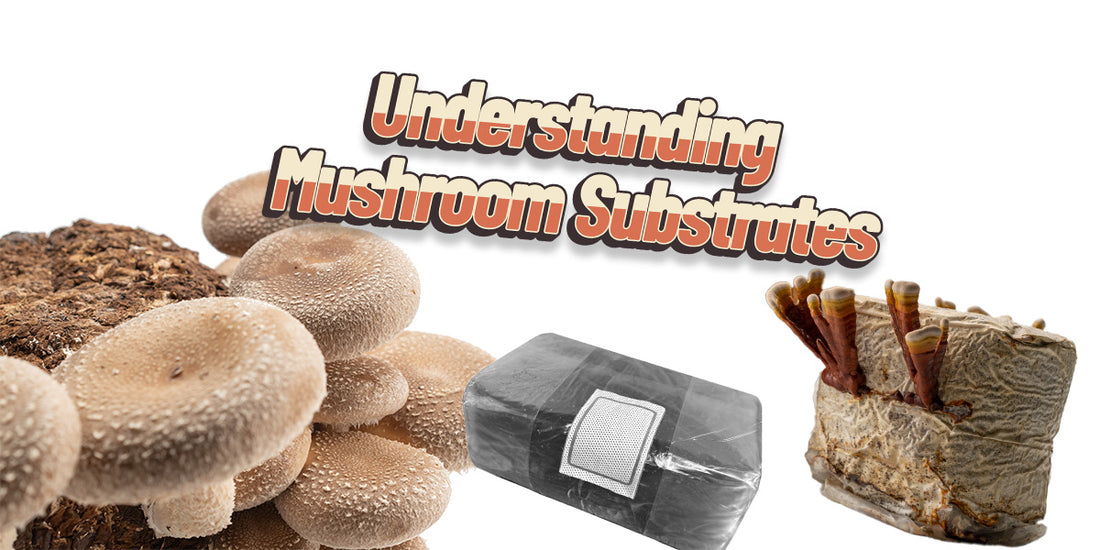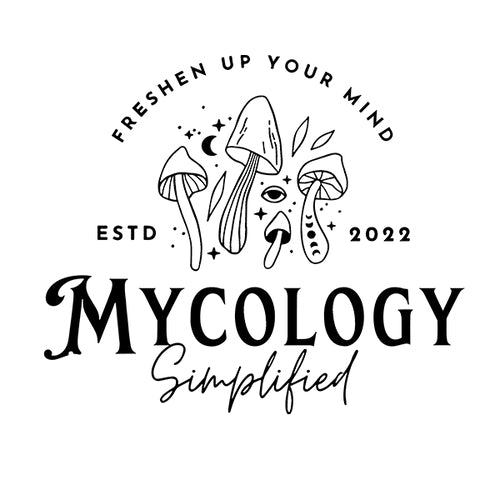
Understanding Mushroom Substrates: From Masters Mix to CVG
Compartir
The journey of cultivating mushrooms doesn’t just start with a spore; it begins with selecting the perfect foundation: the substrate. From backyard growers to commercial farmers, the choice of substrate can make or break your fungal endeavors. Dive into the world of mushroom substrates, where we’ll unravel the mystery behind choosing the right mix for your mushrooms.

The Basics of Mushroom Substrate
Mushroom substrate acts as both a soil and nourishment source for fungi, supporting their growth from spores to mature mushrooms. Think of it as a specialized medium that must be rich in nutrients and maintain a balanced moisture level to foster healthy development. Fungi are unique, drawing their sustenance from the substrate directly, unlike plants that photosynthesize.
Substrates can be made from a variety of materials, including straw, wood chips, and even coffee grounds. However, the ideal substrate varies significantly depending upon the type of mushroom you intend to cultivate. Each species has unique requirements, with some thriving on hardwood, while others prefer compost or straw-based substrates.
Exploring Popular Substrates: Masters Mix
One of the most renowned substrates among mushroom cultivators is the Masters Mix. A potent blend of hardwood sawdust and soybean hulls, this substrate is prized for its high efficiency and productivity. The mix typically consists of a 50⁄50 ratio, providing a balanced environment that’s particularly favorable for growing species like oyster mushrooms.
The success of the Masters Mix lies in its composition, offering both a rich nutrient profile and excellent water retention properties. This allows mushrooms to thrive, leading to potentially higher yields compared to other substrates. It’s an ideal choice for those looking to maximize their production with a relatively straightforward mix.

Getting to Know CVG: Coco Coir, Vermiculite, and Gypsum
CVG stands for Coco Coir, Vermiculite, and Gypsum, a substrate blend that has gained popularity for its ease of use and effectiveness. Coco coir, made from the fibrous husks of coconuts, acts as the primary medium, providing a moist and airy structure. Vermiculite helps retain moisture and nutrients, while gypsum adds calcium and sulfur, vital for mushroom growth.
This versatile mix is not only used for cultivating mushrooms but can also serve as a casing layer, enhancing moisture retention and yielding a richer harvest. The combination of these three components creates a balanced environment that supports the growth of a wide range of mushroom species, from button mushrooms to more exotic varieties.

How to Choose the Right Substrate for Your Mushrooms
Choosing the right substrate for your mushrooms is a critical decision that can dramatically impact your cultivation success. It begins with understanding the natural habitat of the mushroom species you plan to grow. Researching these preferences is a must, as it guides you towards the substrate that best mimics their ideal growing conditions.
For beginners, starting with a more forgiving substrate and mushroom species can be a wise choice. Oyster mushrooms, for instance, are less fussy about their growing medium and can thrive on a variety of substrates, making them an excellent choice for those new to the world of mushroom cultivation.
Ultimately, experimentation is key. Don’t be afraid to try different substrates and mixes to see what works best for you and your mushrooms. Paying attention to the moisture content, nutrient balance, and pH levels will help you refine your approach and achieve the bountiful mushroom harvest you’re aiming for.
Whether you’re a seasoned mycophile or a curious novice, understanding the ins and outs of mushroom substrates is crucial to successful cultivation. Remember, the substrate you choose is more than just soil; it’s the bedrock of your mushroom’s nutrition and growth. Embrace the journey from choosing a substrate to harvest and discover the boundless possibilities of mushroom cultivation.
Links to substrates:
